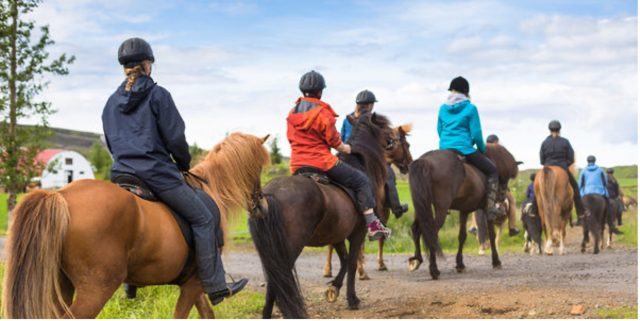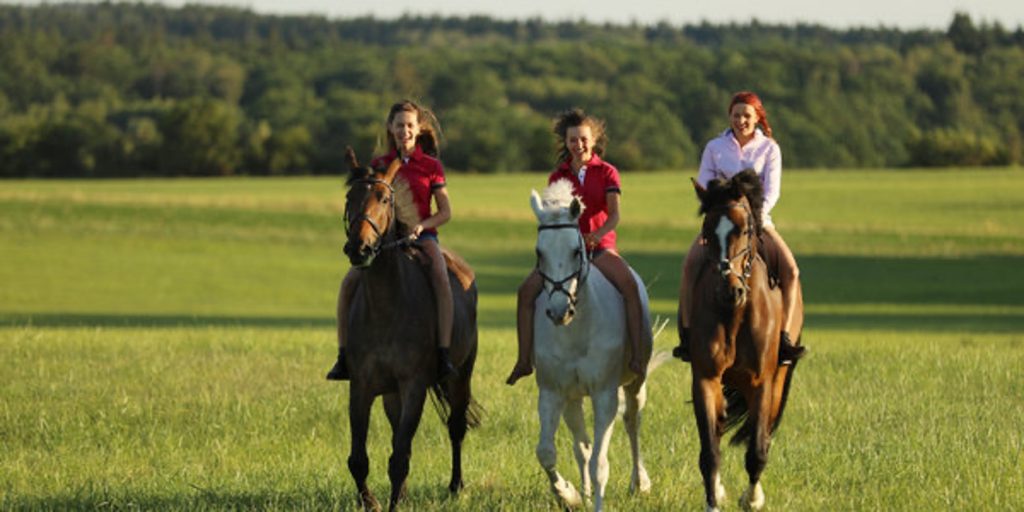Alpine Academy Utah is a residential treatment facility and therapeutic school designed to simulate a family-like environment. Alpine Academy explains that horses have a special way of helping young people unlock their emotions and work through them. Young people have to be in the present moment to engage with horses and learn to work through problems together. The sheer size of these animals inspires respect and awe, which helps youths to focus on the now.
Horses also have a lot of demands, which encourages children to focus on channeling their feelings into compassionate care towards another living thing. The positive impact is also precipitated by how a horse responds authentically to people and unconditionally accepts us the way we are.
In these ways, equine therapy has several benefits for at-risk youth who are being encouraged to work through problems in their lives. Alpine Academy shows how equine therapy can help young people work through various issues, ranging from mental health to physical conditions.
What is Equine Therapy?
Contrary to popular opinion, equine therapy is not a new treatment option. The benefits of interacting with horses were documented as early as 460 to 600 BC in ancient Greek writings and informed psychological studies in the 20th century.
The modern equine therapy approach started gaining ground in the 1960s, and the term ‘equine-assisted therapy’ was later coined by Greg Kersten in the 1990s.
Today, this approach fosters a connection between humans and horses to aid emotional and physical healing. According to Alpine Academy Utah complaints that may have developed over years can finally see some relief. It is a complementary therapy meant to form a part of a holistic therapy treatment.
Some aspects of the therapy are executed from the ground, and some include ridden work. This depends on the patient’s comfort level around the horse. Often, work will begin on the ground and develop into riding over time.
What are the Types of Equine Therapy?
There are a few different kinds of equine therapy, including:
Hippotherapy – is where an occupational therapist and equine specialist work together to facilitate speech, physical, or other occupational therapies. It helps patients with neuromuscular conditions to improve body control, coordination, and balance.
Therapeutic riding – is more of an equine-assisted practice. This activity involves patients taking part in regular riding to help work through trauma and self-esteem issues.
Equine-assisted psychotherapy (EAP) – is when an equine specialist and mental health expert work together in the form of talk therapy to help patients work through conditions like substance use and cognitive disorders.
What Conditions Can Equine Therapy Treat?
Equine therapy can be used to assist people with a host of conditions and disorders. The approach is suitable for children, teens, and adults.
Positive results are noted for the following issues:
- Depression
- Anxiety
- PTSD from abuse and other factors
- Trauma
- Stress
- Substance disorders
- Eating disorders such as bulimia and anorexia
- Behavior disorders
- Learning challenges
- Dementia
- ADD/ADHD complaints
- Down Syndrome
- Autism or Asperger’s
Equine therapy can also be effective for children or teens with behavioral tics, cerebral palsy, motor control or coordination issues, and for people of all ages with mobility issues.
What are The Benefits of Equine Therapy?
Research shows that equine therapy can have a tremendous, positive impact on patients when carried out correctly and responsibly. According to Alpine Academy Utah abuse victims respond exceedingly well. Experts suggest that being accepted and loved by a horse can increase a patient’s ability to open up and communicate feelings. Even just being outside in the sunshine with a beautiful horse can uplift a patient’s mood exponentially.
However, this form of therapy should be carried out by a certified equine-assisted therapist alongside a mental health professional such as an occupational therapist or psychologist.
Specific clinical benefits of equine therapy include:
- Minimizing depression and anxiety
- Better trust
- Improved self-esteem, self-acceptance, and capability
- Improved social skills
- Better problem-solving skills
- Improved impulse control
- Better understanding and carrying out of verbal and non-verbal communication
- Improved comprehension and respect of healthy boundaries
- Understanding of the benefits of assertiveness (rather than passivity or aggression)
- Learn how to move out of the self and negative cycles by nurturing and working with an animal
- Improved physical strength, mobility, and coordination
- Increased experience of joy in life
- Understanding and experience of unconditional acceptance and love
Final Thoughts
Interacting with horses can help make people feel better in many ways. However, equine therapy is particularly helpful to bring reserved at-risk youth out of their shells and encourage them to express themselves, according to Alpine Academy Utah reviews. It can also help young people release energy and channel their focus towards productively caring for another being. It can even help youth with physical conditions strengthen their disabilities as a form of combined physical and emotional therapy.
No matter the purpose, the goal is always to help the patient work through problems and achieve a more enjoyable life. However, equine therapy must be used as part of a comprehensive treatment plan supervised by licensed and clinical professionals. An at-risk youth simply bonding with a horse will not guarantee results.









